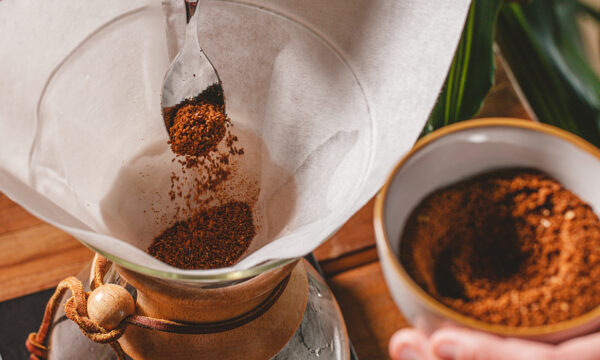
- Home
- How to Use a Coffee Tamper Correctly
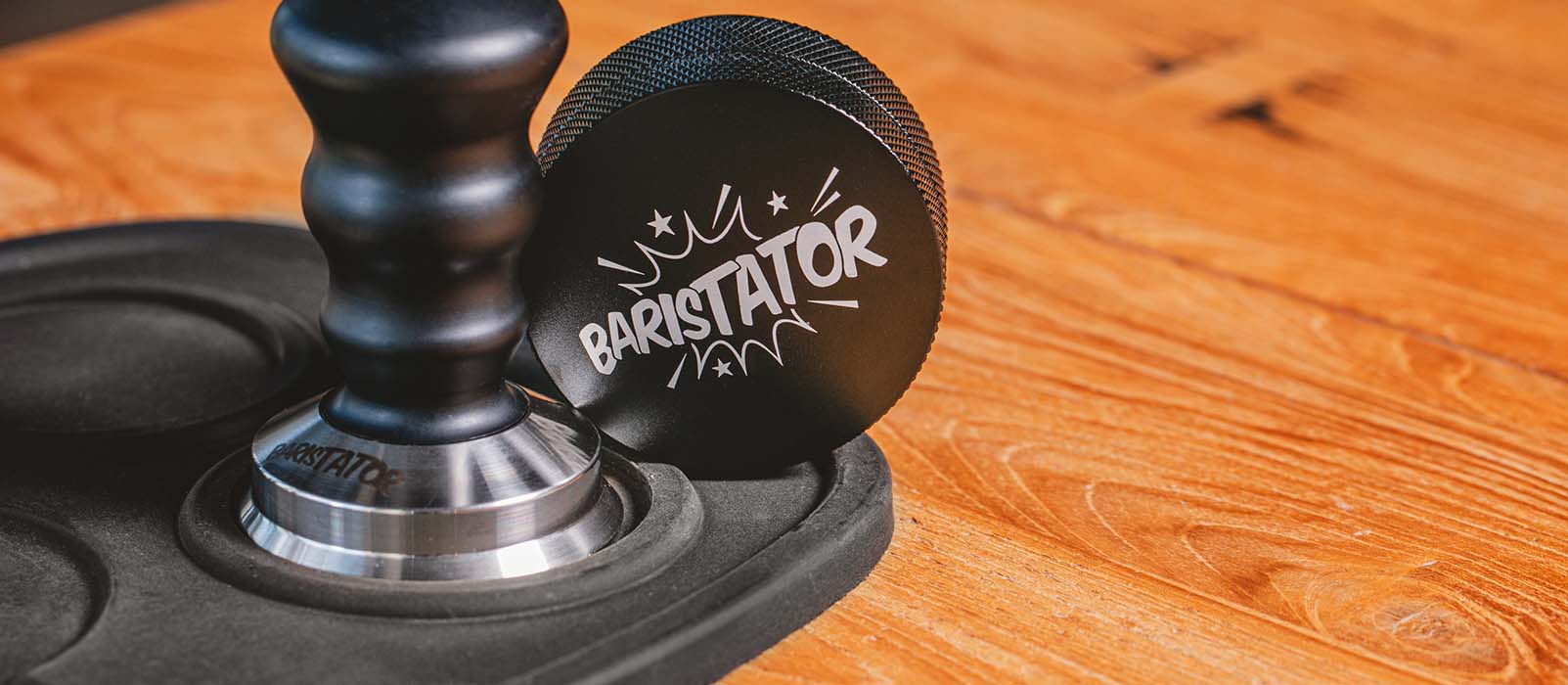
How to Use a Coffee Tamper Correctly
Written by Monica
To have a good extraction whether you’re using a manual espresso machine or practising to be a barista, it is essential to use a coffee tamper. There are several steps involved in the correct usage of a coffee tamper, and this guide will walk you through each one to help you make the perfect shot of espresso at home.
Tuto video
Our Youtube channel
What is a Coffee Tamper?
A coffee tamper, also known as a compressor, is the quintessential tool for any barista. It is used to press down the coffee grounds in the portafilter basket, ensuring an even and compact bed of coffee for extraction.
Over 75 years ago, the Italian coffee maker, Illy created the very first compressore. The idea was to level and compress the coffee grounds in the filter to achieve better particle distribution. Since hot water at high pressure will always find the paths with the least resistance to go through, this reaction is known as channelling.
Therefore, without proper tamping, some grounds will be under-extracted while others will be over-extracted. Tamping allows the water to soak up and extract oils from the grounds, leading to a more balanced and flavourful coffee extraction.
Choosing the Right Coffee Tamper
Matching Your Tamper to Your Portafilter Basket
Firstly, ensure the tamper’s diameter matches that of your filter. Not all machines have the same filter size, so it’s crucial to select a tamper that fits snugly within your portafilter basket. A correctly sized tamper will allow you to apply even pressure across the bed of coffee ground, which is essential for optimal extraction.
Select the handle’s shape and length based on the morphology of your fingers. For instance, a long, thin handle is better suited for long, slender fingers, while a shorter, thicker handle might be more comfortable for someone with smaller hands. Comfort is key, as a good grip will help you apply consistent pressure during tamping.
Selecting the Tamper Material
The material affects the tamper’s weight: aluminium is lightweight, while stainless steel or brass are heavier. The weight of the tamper can influence the amount of pressure you need to apply. Heavier tampers require less effort to compress the coffee grounds effectively, which can be beneficial for beginners.
There are different base shapes: flat, convex or domed, ripple and serrated. Although there are no definitive studies on the advantages of each shape, it is recommended to match the base shape to your machine’s diffusion screen.
A flat base is the most common and provides an even pressure distribution across the coffee bed.
Convex bases create a tight seal inside the portafilter basket thus preventing any channelling issues.
The ripple base tamper with its concentric circles, forms ripples on the coffee bed allowing the water to sit evenly which often results in a balanced and flavourful cup.
Finally, the serrated bases can be trickier to use, just like the ripple base, it creates water channels on the coffee bed grip leading to a superior flavour profile. Nonetheless, if not used properly it can result in an uneven extraction.
How to Tamp Coffee Correctly
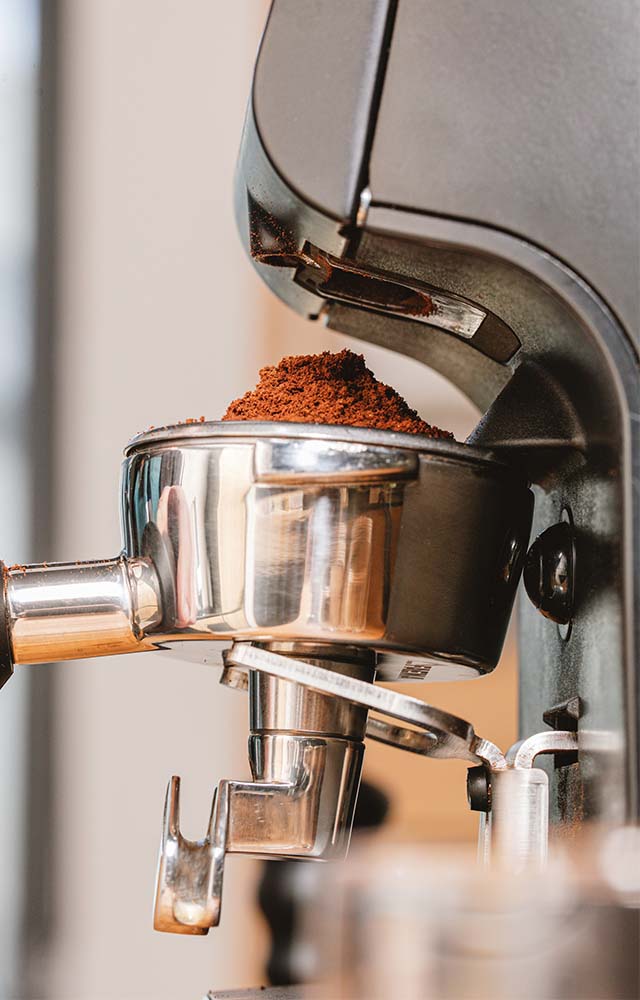
Step 1: Levelling the Coffee Grounds
Before tamping, it’s important to level the distribution of the grounds. Regardless of the type of grinder used, the grounds often form a small mound in the filter. Levelling ensures an even thickness across the filter, which is crucial for uniform extraction.
To level the grounds, gently tap the portafilter on each side with your hands. This will cause the grounds to settle evenly. Some baristas also use a coffee distributor or leveller, which can be an excellent tool for achieving a perfectly level bed of coffee.
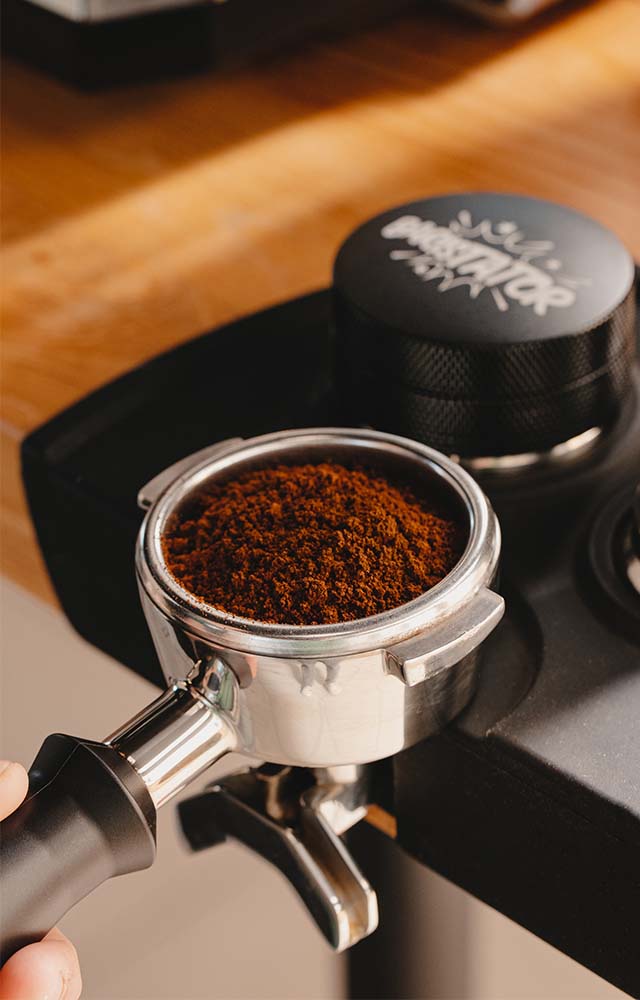
Step 2: Tamping the Ground Coffee
Now it’s time to tamp. Ensure your portafilter is on a tamping mat or support to avoid damaging your work surface. Tamping on a stable surface ensures that the pressure you apply is consistent and even.
Tamping involves three steps:
- Position your portafilter: Place the portafilter on the tamping mat, ensuring it is stable and level.
- Distribute the grounds: If you haven’t already used a distributor, use your tamper or a distributor to level the grounds.
- Apply pressure: Hold the tamper with your thumb and index finger around the base, and the rest of your hand gripping the handle. Apply about 15 kilograms of pressure with your tamper, pushing straight down. Some baristas recommend using a bathroom scale to get a feel for the right amount of pressure.
MaxiCoffee tips for Better Espresso Extraction
Throughout the process, align your forearm with the tamper to ensure the force is perpendicular to the coffee grounds surface. This technique helps to avoid uneven extraction, which can lead to bitter or weak coffee. While not mandatory, using a tamper significantly improves coffee extraction in most cases. Proper tamping helps to create a uniform puck of ground coffee, which is essential for achieving a balanced and flavourful espresso.
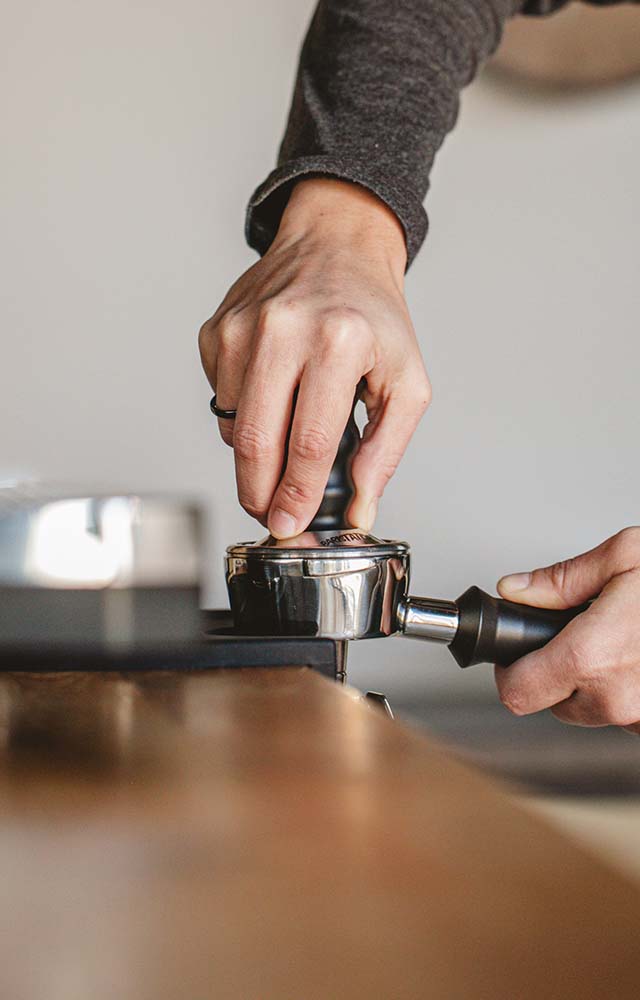
Common Mistakes to Avoid
Uneven Pressure: Applying uneven pressure can cause channelling, where water finds paths through the puck, leading to under-extraction in some areas and over-extraction in others.
Inconsistent Pressure: Varying the pressure each time you tamp can result in inconsistent shots. Aim to apply the same amount of pressure every time.
Skipping Levelling: Not levelling the grounds before tamping can lead to an uneven puck, even if your tamping technique is perfect.
Advanced Tamping Techniques
For those looking to perfect their espresso-making skills, consider experimenting with different tamping techniques:
- Nutating Tamp: This involves a slight twisting motion while applying pressure to ensure the edges are firmly compacted.
- Calibrated Tamper: These tampers click when you reach the desired pressure, helping ensure consistent tamping pressure.
MaxiCoffee Tips for Better Flavour
MaxiCoffee recommends always aligning your forearm with the tamper to ensure the force is perpendicular to the surface of the coffee grounds. This alignment helps distribute pressure evenly across the puck, leading to better extraction. Throughout the process, focus on consistency. Consistent technique and pressure will lead to more predictable and delicious results. Practice makes perfect, so don’t be afraid to experiment and refine your technique.

Explore More with MaxiCoffee
Using a tamper isn’t just about improving your coffee’s taste; it’s also about embracing the barista experience at home. At MaxiCoffee, we offer a wide range of barista tools and accessories to help you perfect your coffee-making skills. Visit our store today and elevate your coffee experience!
Check out our selection of tampers and coffee distributors to find the perfect tools for your setup. Whether you’re a seasoned barista or just starting, the right tools can make all the difference.
For more tips and guides, explore our coffee accessories and elevate your coffee-making game.
While using a tamper might seem like a small step, it plays a crucial role in the espresso-making process. Proper tamping ensures even extraction, leading to a balanced and delicious espresso. With the right tools and techniques, you can make barista-quality coffee at home. Happy tamping!
Discover our other articles

